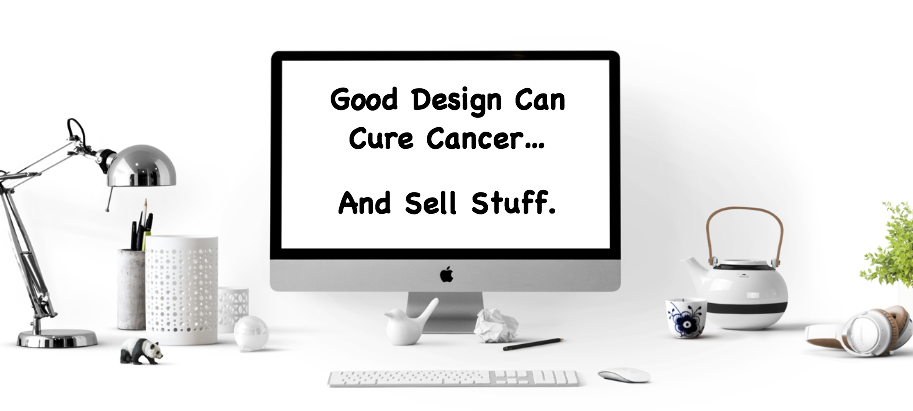One of our designers turned me onto a brilliant YouTube video by Mike Morrison, a scientist who argues that better design can help to accelerate insight and discovery at scientific conferences … leading to a better transfer of knowledge and speeding up scientific progress.
While improved design can help cure cancer … the same theories can help you better sell stuff.

In short, Morrison talks about poster sessions at scientific conferences, where scientists share their studies with other researchers. These poster sessions may last an hour or so and include dozens of studies for attendees to review. It is impossible to see all the studies, and realistically, only a handful of findings may be relevant to any given scientist. The trick is wading through the clutter to find the studies that matter and gaining the relevant insight.
Sound familiar?
Your audience must wade through thousands of ads per day, when only a handful are relevant. Your ads need to get the audience’s attention, prove their relevance and provide insight … all in a limited amount of time.
Problems:
- Lack of time: Designers are on deadlines and often rush through a project making them look pretty, but not functional.
- Copy old designs: 1950’s admen created a template that too many advertisers still essentially use. Times and tools change … your design theories need to also.
- Too much information: Our products, our brands and our stories are important to us. But, in reality, it’s not that important to your audience. Too many companies try to tell their whole story in every marketing piece when the target doesn’t really care.
- You can’t quickly interpret: A picture is worth a thousand words, but a tight message is priceless.
- We assume people are reading every word: They are not.
Try to experience your ad at real-speed. Give yourself 3-5 seconds and see what you retain.
“Perfection is not when you have nothing to add. It’s when you have nothing to take away.”
Solutions:
1. Punchline First: What is the ONE THING the audience needs to know?
According to a study by Inskin Media:
“Ads achieving at least one second of gaze time are viewable for an average of 26 seconds. For at least two seconds gaze time the average viewability is 33 seconds, while for 3+ seconds gaze time, average viewability is 37 seconds.”
What this means is that people are not looking for your ad. Online, they are looking for the content. With digital ads, for example, your message must be on the page for 26 seconds just to be NOTICED for one second.
You have no time to waste … get to the point! If the audience gets ONE takeaway, you’re lucky! Stay focused.
2. Use Plain Language: Keep your message simple.
The most recent studies now show that we are exposed to roughly 5,000 ad messages per day. If we assume you’re awake for 16 hours a day, you see 5.2 ads per minute on average!
It is impossible to take in and comprehend all that stimuli.
Your design and message needs to be impactful enough to get noticed in the clutter, but simple enough so that the target doesn’t have to think too hard.
3. Functionality: How will the audience interact with your message.
Each individual marketing tool has a different purpose. Consider how the target will interact with the piece and, ultimately, how they will be able to act.
Both billboards and digital display, for example, must tell a story in 3-5 seconds, but only one has the capability for an immediate call to action with a click. Your design for each tool must be different.
Functionality may not win creative awards, but it will generate better results.
4. Secondary Information: Your ad doesn’t need to tell the whole story.
You still want everyone to know everything, right? The job of the marketing message is to generate awareness and interest … THAT’S ALL!
If you’ve done your job, the audience will want to know more and, in the age of Google and smartphones, it’s not hard. Provide an easy access link to everything the audience needs to know. Just as importantly, that link must provide an easy way to act immediately. Your call to action page should include:
- All the info the audience needs in a quick-read format
- A way to act or buy now
- A lead generation form for when the target is interested, but might need more information before purchasing
Great advertising is not “arts and crafts,” it is a science. It must be studied, tested and practiced.
Smart design can, indeed, cure cancer … and help you to gain more market share.
SUBSCRIBE TO THIS FINANCAL MARKETING BLOG
Free Bank & CU Marketing eBooks & White Papers
Read Success Stories
See Our Videos
email me directly
937-371-2461
Follow us on Twitter @MarketMatch


